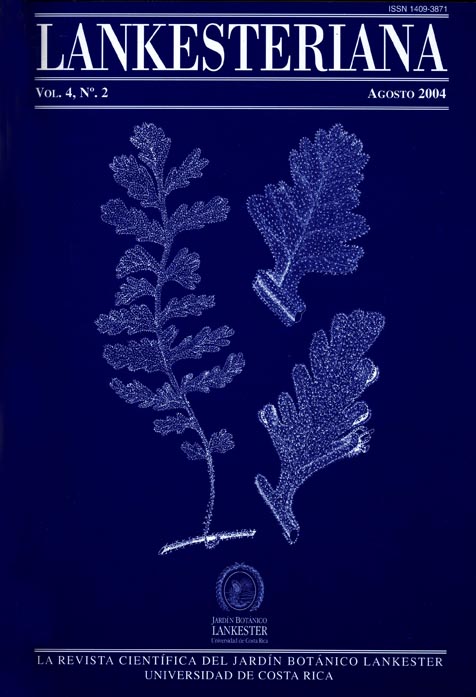Botánica y numismática: las plantas en las monedas de Costa Rica (1709-2004)
DOI:
https://doi.org/10.15517/lank.v4i2.21618Keywords:
numismatics, coins, Attalea, Caulerpa, Ceiba, Coffea, Enterolobium, Guarianthe, Laurus, Myrtus, Nicotiana, Quercus, Theobroma, Costa RicaAbstract
The coins of Costa Rica include a variety of plant illustrations, ranging from a palm tree (Attalea rostrata ?) on the first known gold coin (1825), to a marine green algae (Caulerpa prolifera ?) on a silver commemorative piece of 1974. Cocoa (Theobroma cacao) seeds were legalized for use as currency in 1709. The national tree (Enterolobium cyclocarpum), and the national flower (Guarianthe skinneri) an orquid, were both represented in commemorative coins of 1975, and again the orchid in a silver piece of 1983. Coffee (Coffea arabica) and tobacco (Nicotiana tabacum), are represented as whole plants in coins of 1842 and 1847-1850, respectively. Coffee branches have been used since 1935 on most coins. The silk cot- ton tree (Ceiba pentandra), and an evergreen oak species (Quercus sp ?) are featured in mid XIX century pieces. Illustrations similar to the myrtle (Myrtus communis), and an unknown species of palm, were com- monly used as wreaths in coins since 1842. Laurel (Laurus nobilis) is mentioned in decrees since 1863. However, desings more similar to M. cummunis than to L. nobilis were included in gold and silver coins.
Downloads
Downloads
Published
How to Cite
Issue
Section
License
According to the Open Access policy promoted by the University of Costa Rica, all the papers published by Lankesteriana are licensed under the Creative Commons copyright and can be downloaded free of charge. The journal holds copyright and publishing rights under the CC BY-NC-ND 3.0 CR license.
Before the publication of the materials submitted by the author(s) in LANKESTERIANA, the author(s) hereby assign all rights in the article to the Lankester Botanical Garden.





